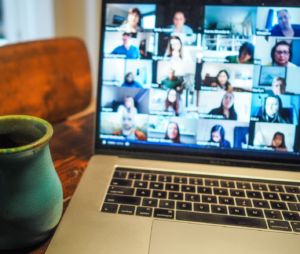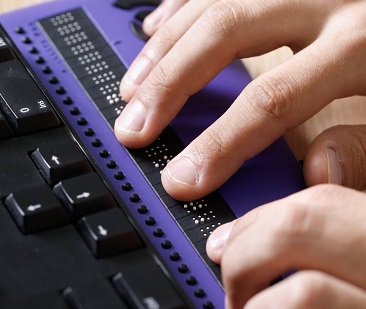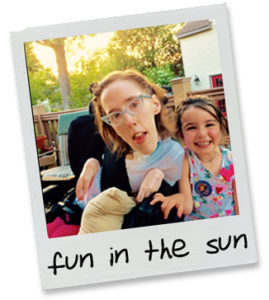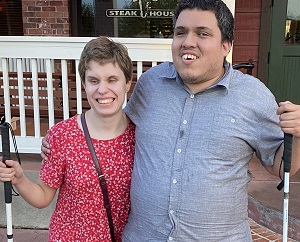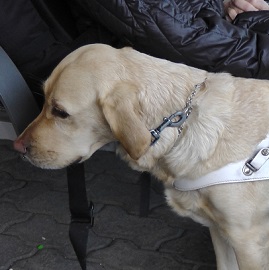Four Protections Under the Fair Housing Act and Americans with Disabilities Act You May Not Know
by Team Easterseals
![]() The Americans with Disabilities Act’s (ADA) 32nd Anniversary is on July 26th! This landmark legislation has been instrumental in advancing civil rights for people with disabilities. While we celebrate the ADA’s impact in the lives of one in four Americans living with a disability today, Easterseals, along with disability advocates across the country, are actively fighting to ensure that protections under this legislation are honored and enforced.
The Americans with Disabilities Act’s (ADA) 32nd Anniversary is on July 26th! This landmark legislation has been instrumental in advancing civil rights for people with disabilities. While we celebrate the ADA’s impact in the lives of one in four Americans living with a disability today, Easterseals, along with disability advocates across the country, are actively fighting to ensure that protections under this legislation are honored and enforced.
Throughout the decades since the ADA was signed into law, advocates have also worked to eliminate gaps and loopholes when it comes to ADA protections that are often overlooked. That work continues to this day. People with disabilities still experience barriers in all areas of life, including employment, financial stability, education, and heath care. Securing accessible housing isn’t without its challenges, too, and in a housing industry that is often difficult to navigate, many may not be aware of the protections they do have.
While the ADA protects against discrimination in matters of employment, education, transportation, and access to areas available to the public, the Fair Housing Act (FHA) includes protections when renting, buying, or refinancing a home. Both are essential to ensure equity, inclusion, and access for all. However, due to the lack of support and education, some may believe independent living is unattainable. We are here to say that is not true! There are resources and options available and there are protections under both the ADA and FHA you may not know.
If you’re thinking about renting or buying, now or in the future, make sure you remember these four protections from Freddie Mac and Alabama’s Center for Fair Housing:
- Housing providers must ensure an accessible or assigned parking space, even if it requires a cost for the provider. This request is considered a reasonable accommodation. Housing providers must honor this request even if the provider has a policy that doesn’t include assigned parking spaces or if there’s a waiting list. Parking accommodations include curb cuts, repainted markings, and signage. Remember, you do not have to pay any extra fees for this request.
At the Alabama Center for Fair Housing, a client with an invisible disability requested an assigned parking space. He was having a difficult time finding parking close to his unit and the one accessible parking space was almost always occupied. The center was able to request a reasonable accommodation for an assigned parking space for the client and the request was granted.
- You do not need a letter approved by housing providers if you have a service animal. Service animals are protected under the ADA — and that remains true even if the housing provider has a policy that doesn’t allow pets. Emotional support animals, however, are covered under the FHA.
Even if your request to live in the unit with a service animal is denied, you still have options. For instance, a client with a disability contacted the Center for Fair Housing for assistance because her apartment complex had a no-pets policy and denied her request to live with an emotional support animal. The center advised the client to ask her doctor for a letter regarding the need for her emotional support animal which could be presented to the complex’s management company. After presenting the documentation from her doctor, the client was asked by management to fill out their reasonable accommodation request form and the request was granted.
- You cannot be denied a mortgage loan because you’re pregnant. A lender cannot deny a mortgage to a woman because she is on or plans to go on maternity leave.
- Interpreters and Braille documents (to gain access to applications and printed documents) are both considered reasonable accommodations under the ADA. These are covered under the effective communication requirements by law and can apply at any point in the housing process.
If you’re considering renting, buying, or refinancing, and need support and assistance, there are resources available to help. In partnership with Freddie Mac, a government-sponsored enterprise in the housing industry, Easterseals has developed a series of webinars and educational resources to assist people with disabilities, veterans and their families on the road to financial stability. Visit Easterseals.com to learn about ways you can shore up your finances in preparation for renting or buying a home.
For even more support, you can visit My Home by Freddie Mac® to learn about homebuying, homeowning, and renting. Freddie Mac has made housing more accessible for communities nationwide and offers a free, on-demand financial enablement curriculum, CreditSmart®, you can use today to make better finance, credit, and homebuying choices. You can follow Freddie Mac on Twitter, Facebook, Instagram and LinkedIn to get more tips and resources for your housing journey.







